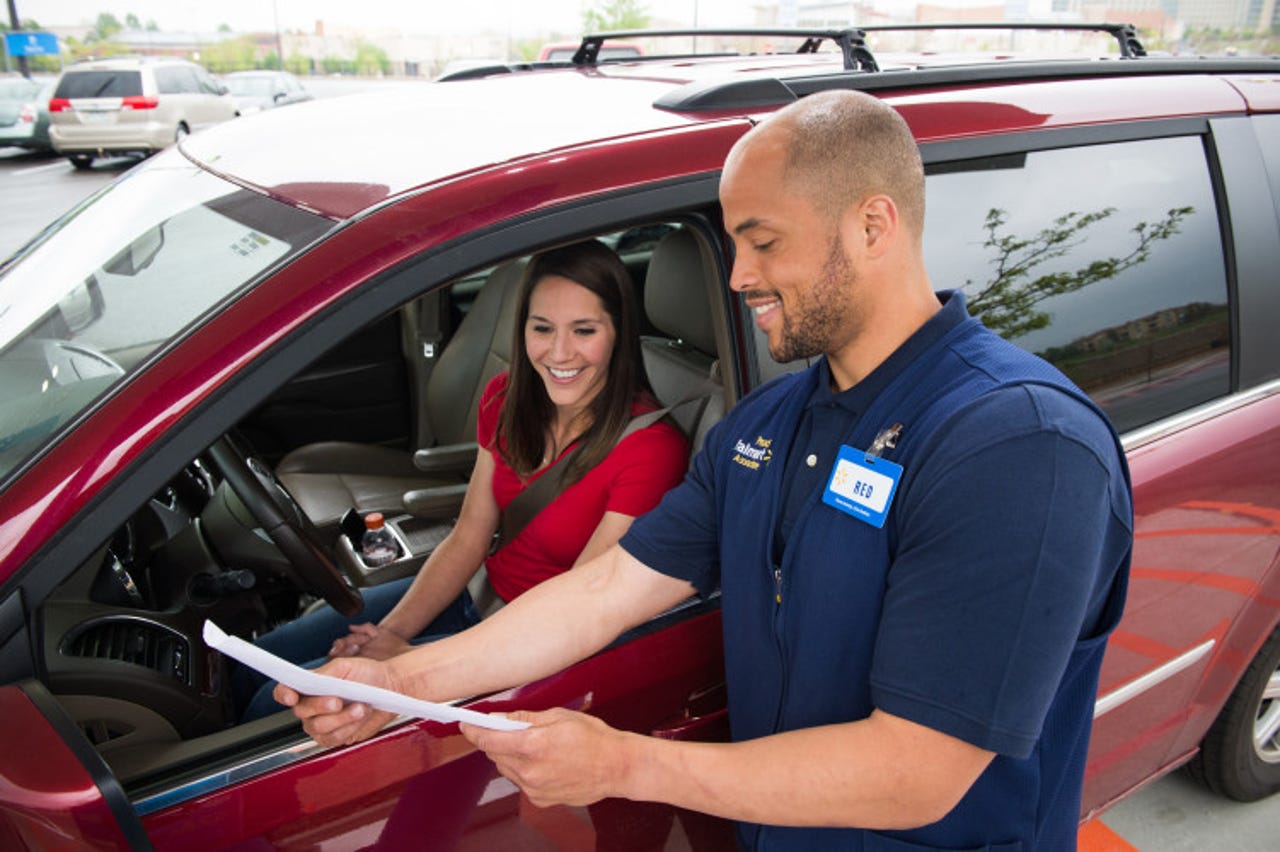Walmart's latest e-commerce push could bring online grocery shopping to the masses


When it comes to commerce, there's no denying the power of the Internet.
Over the last 15 years, the world of online retail has transformed the way products are bought and sold, creating a society of consumers accustomed to the convenience of click-and-deliver.
But while most of us now instinctively turn to the Web to purchase the likes of electronics, clothing and toys, there's still one major product category that lives firmly in the physical world: Grocery.
Despite the efforts of a handful of companies, grocery is the last area of commerce to develop a firm digital identity.
AR + VR
However, like with any final frontier, prospectors have caught wind of the opportunity and sized up the market, and now buying bread as we know it is on the precipice of change.
This week, Walmart announced it was significantly expanding its online grocery services and will now offer curbside pickup for groceries ordered online in eight new markets.
Walmart already had been testing online grocery with free pickup and/or delivery in San Jose, Denver, Huntsville, Alabama and its home turf of Northwest Arkansas. The new locations include Atlanta, Nashville, Tucson, Colorado Springs, and Charlotte and Fayetteville, North Carolina.
The move comes as Walmart's competitors -- namely Amazon and Target -- test their own e-commerce grocery initiatives.
Amazon has been testing its subscription-based AmazonFresh grocery delivery service in urban markets including Seattle, Brooklyn, Philadelphia and multiple regions in California. It's also expanded its delivery options through its one-hour delivery service PrimeNow.
Target, meanwhile, has turned to startups Curbside and Instacart to roll out local pickup and delivery services in select markets around Minneapolis, San Francisco, New York and New Jersey.
Walmart's approach, however, has been a little different.
The world's largest retailer has dipped its toes in both the pick and the delivery waters. Somewhat unsurprisingly, Walmart figured out that it can leverage its massive brick-and-mortar footprint -- where 75 percent of the US population lives within five miles of a Walmart store -- to bring down costs and expand online grocery services more rapidly than the rest.
That's a tremendous advantage, said Rich Tarrant, CEO of e-commerce platform MyWebGrocer.
"Walmart has a store location within a few miles of nearly every household in the United States," Tarrant said. "They can offer grocery commerce in all these markets much quicker than any of the other players -- and they can do it without the capital expense and operational expense of a delivery system by leveraging pick-up."
Walmart's cost benefits can not be understated. By focusing on local pickup over delivery, Walmart is able to save some serious cash that it can then pass down to the consumer.
Unlike the delivery services from Target and Amazon, where delivery fees and subscription fees abound, Walmart's pickup option is being offered for free. And the reason it's free is because Walmart has no need for a middle man. It can simply designate a team of employees as "personal shoppers" to shop and load online orders as part of their daily assignment.
For customers, they just shop their grocery lists online, choose a time to pickup their orders, and then pull into a designated parking area at their local Walmart store and an associate loads the order into their car.
"This new, easy shopping experience is an innovation that's helpful for anyone with a busy schedule - particularly moms with small children," Walmart's head of e-commerce Michael Bender wrote in a blog post. "They can shop online and choose the pickup time that works for them, and they never have to unbuckle anyone's seat belt."
Of course, there are challenges to bringing an entire grocery store full of products to an online marketplace.
According to Mike Lapchick, CEO of Shotfarm, one of Walmart's product content exchange partners, one reason why online grocery has been so slow to take off is because of the vast disconnect between suppliers and retailers.
"Product information you see on a website has to get from the manufacturer to the retailer and no two platforms exchange information in the same format," Lapchick said. "It's painstaking on both sides to collect information and reformat it for their own systems, so you get people scrambling to get stuff online quickly and then end up with no product information or worse incorrect product information."
In the grocery world, faulty or missing product information can be a big problem with lots of liability. Before the e-commerce wave, most merchants and grocers abided by the standards set forth by the Global Data Sync Network (GDSN), allowing trade partners to globally share trusted product data.
But then Amazon came along, snubbed its nose at the standard and decided to issue its own.
"So grocery is left scrambling to exchange product information for companies like Amazon and Walmart and Google," Lapchick said, leaving the system somewhat bungled and without online data exchange standards. Companies such as Shotfarm can act as a bridge between disparate formats, but even so, the grocery channel overall still lags far behind in terms of being digitally interconnected and optimized for e-commerce.
However, like most things slow-to-change, it's only a matter of time. If consumers express enough interest, retailers will almost always rush to adapt.
"Consumers want to be able to order their groceries online. Grocery shopping is a high frequency consumer event that is defined primarily as a 'task'," said Tarrant. "Consumers have always embraced technology to facilitate tasks and extend convenience. Grocery shopping will not be any different."